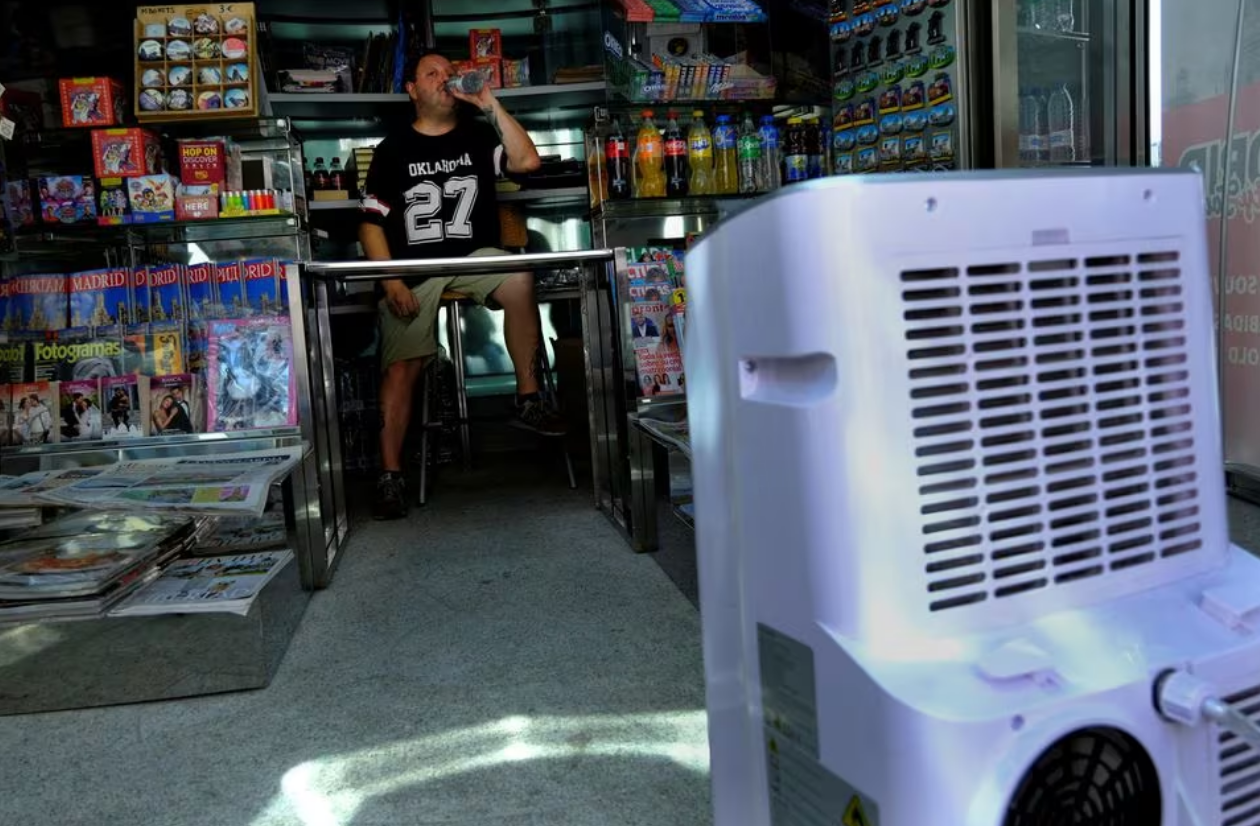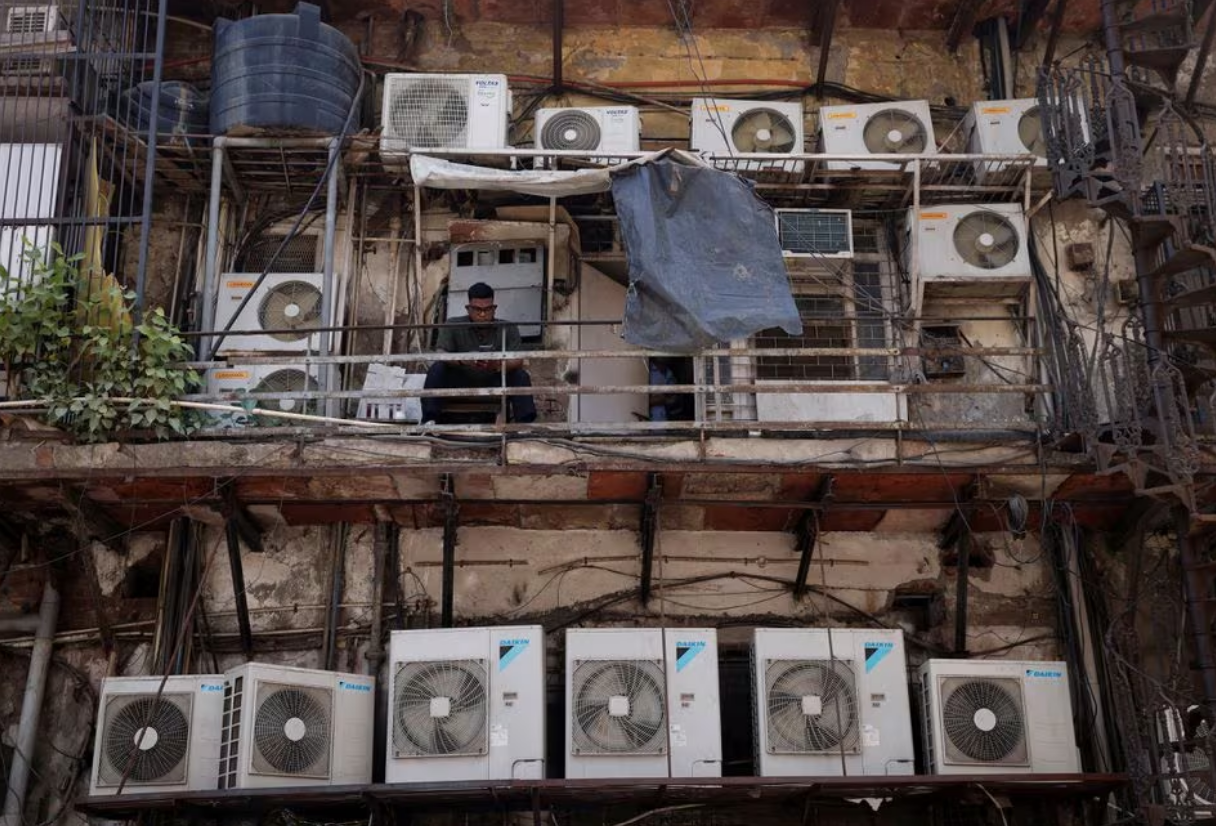DUBAI - When temperatures climbed north of 40 degrees Celsius (104 degrees Fahrenheit) in Seville during this summer's crushing heatwave in Europe, air conditioning use jumped 23 percent in the southern Spanish city compared to how many hours ACs ran during the same period in 2022.
Lisbon's average AC use, too, went up by about 41 percent in mid-June to mid-July, compared with the same period the previous year, according to data analysis from Sensibo, a company which specializes in smart devices that can control ACs remotely to cut energy use.
While cooling technologies can save lives during deadly heat, they also threaten to worsen the climate crisis.
The energy used in cooling and refrigerants accounts for about 7 percent of global greenhouse gas emissions, and demand could more than triple by 2050, according to the International Energy Agency.
"We've got a big problem," said Lily Riahi, head of the United Nations Environment Programme's (UNEP) Cool Coalition. "Without strong policy actions, emissions will skyrocket."
At this year's U.N. climate summit, governments and companies are grappling with the problem by discussing energy efficiency and reining in high-polluting refrigerants.
Dozens of countries are backing a COP28 pledge to reduce cooling-related emissions by at least 68 percent by 2050 from 2022 levels.
But industry experts say governments need to offer incentives for companies to bring sustainable AC technologies to market and scale up.
Even making today's most efficient units more affordable could help, she said.
"There is super efficient equipment available today that is not being tapped into," Riahi said. "We need to create demand with policy."
|
|
| A man uses his mobile phone as he sits amidst the outer units of air conditioners, at the rear of a commercial building in New Delhi, India, April 30, 2022. Photo: Reuters |
Cool design
AC companies have been developing better products for years, with units using less power and releasing fewer hydrofluorocarbons (HFCs), potent greenhouse gases.
One way conventional ACs are so energy intensive is through processes for eliminating humidity.
Conventional ACs transfer heat outside by converting gas refrigerants to liquid and back again, which generates cooling.
Removing humidity requires cooling air to the point at which water vapour becomes a liquid to be drained. This inability to get rid of humidity without first cooling the air makes conventional ACs less efficient.
"Humidity is what drives comfort, even more than temperature," said Sorin Grama, CEO of the U.S. startup Transaera. "Current air conditioners suck when it comes to removing humidity."
Grama co-founded Transaera in 2018 based on novel cooling materials discovered at the Massachusetts Institute of Technology.
The company's AC prototype uses these materials to dry out air, aiming to produce fewer emissions than traditional ACs.
Two major AC companies, Gree Electric and Daikin, won a 2021 competition supported by the Indian government and nonprofits to build a better air conditioner.
Like Transaera, the winning prototypes focused on removing humidity and achieving a climate impact five times lower than available ACs.
Two years later, there are no plans to bring those winning prototypes to market. While Gree hopes soon to offer a scaled-back model, Daikin said material costs and supply chain issues were still obstacles.
"It's not economically feasible," said Miki Yamanaka, department manager of Daikin's Global Environment Center.
Markets of scale
Industry experts say policies and incentives are needed to lower consumer costs. More than 1 billion people living in warm climates still lack access to cooling, according to nonprofit Sustainable Energy for All.
"Cooling is more like a right than a luxury," said Larissa Gross of climate think tank E3G.
UNEP's Riahi said governments can consider implementing stricter energy performance standards, clearer efficiency labelling, subsidies or bulk procurement to stimulate demand and lower costs.
Meanwhile, import tariffs can help prevent inefficient, second-hand models being resold in developing countries.
Gree is not yet releasing commercial models that replicate its super-efficient prototype. Market research suggested people were not willing to pay as much as 150 percent more, said thermal engineer Baolong Wang of Tsinghua University in Beijing who worked with Gree on its prototype.
"Some countries like Indonesia, the economics are not so developed, but they need this kind of cooling," Wang said. "You have to focus on affordable cooling".
The company instead plans to soon market a similar model but for drier conditions in the Middle East. This model uses the prototype's high-efficiency air compressor, but switches to a cheaper refrigerant with higher emissions potential than the prototype's R152a refrigerant, he said.
Wang said Gree was also working on a model for the more humid Indian market.
Another startup from Britain called Barocal is also working on improving AC technology, with its initial prototype using solid refrigerants instead of climate-polluting gases.
"We've been working hard on a second generation of prototypes that are performing well in all metrics — good cooling power and efficiency," said Barocal founder Xavier Moya, a material physics researcher at the University of Cambridge.
The startup Transaera, which last year received $4.5 million in seed funding from U.S. company Carrier's venture capital group, aims to get a product to market by 2025.
"This industry goes slow," Grama said. "You have to generate supply chains and partnerships ... We have to work within the confines of a 100-year-old industry changing its direction."






















































